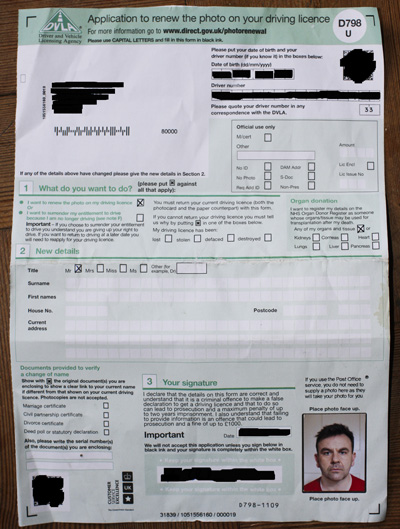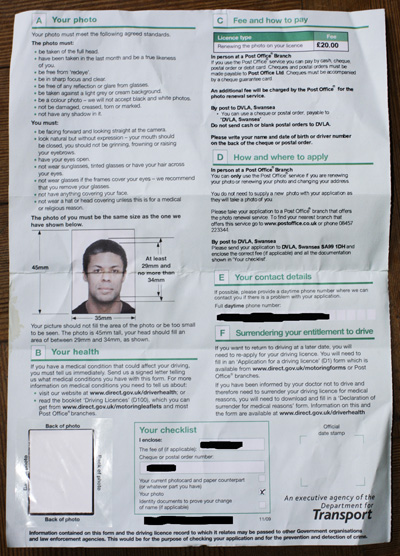Jun 12, 2011 6
A few home truths about online pornography
I read this curious article this morning.
It’s got a strong whiff of “being seen to do something”, while shying away from some of the more serious realities.
I am not an expert on this topic, but neither am I that coy about it.
So here are a few comments that might be informative, as none of the principal players involved seem that keen on actually getting to grips with the reality of the subject matter.
Back in the 1970s, when many of our policymakers and politicians were growing up, porn was generally found in skips and hedgerows. Ripped-up, soggy copies of Playboy and Penthouse formed our mental models of the genre. The women (there were no men) were beautiful, semi-naked, and generally decorous. There was stuff about fast cars. There were made-up letters about unlikely liaisons on aeroplanes.
{Health warning for the sensitive: if you don’t want to read some frank words about what things are really like, don’t continue. Perhaps try and get some people to vote for you to make laws and stuff instead. Get some misinformed articles published in the mainstream press. Pretend you have no idea about any of this, and hum la-la-la when anyone raises the subject. That sort of thing.}
The more gynaecological poses were the province of darker stuff, imported from Scandinavia or Holland and sold in plastic bags in dark little shops in city back streets.
But we didn’t like to admit we knew phrases like “Color Climax” so we stuck with the safer, top-shelf, tee-hee-hee Playboy as our model. (I actually saw a tweet yesterday where the word “penthouse” in an unrelated context was used as a cue for a joke about smut. It’s become part of our vocabulary).
So roll forwards to 2011 and we’re having a bit of a fret about this thing called online porn, and how it might be corrupting the young and how it might be dealt with.
And the example that’s being dragged out from the (unavailable) Ofcom report is playboy.tv.
PLAYBOY TV?
So that’s what we’ve got to watch out for? Have you looked at it? Look at it. It’s pretty harmless. Almost slightly silly.
Online, it’s much like the magazine, glossy, playing out fantasies of gorgeous hostesses, fast-car lifestyles, Malibu and other such bollocks. Lots of splashing around in bikinis, but not as far as I could see, a hint of a vulva in front of the paywall. Soft porn. For anything else, you need to pay. I didn’t. And why would I?
Because the world of the shiny member sites (sorry) and their sort-of-soft-and-not-that-corrupting-really “pornography” isn’t the world of online porn.
Google the word “porn”. Seriously. Be brave. Your mum won’t find out. I promise. (Unless you use her computer. In which case, don’t.) You won’t see playboy.tv, or anything like it, on the first few pages of results. I got bored scrolling through the screens and didn’t find it.
You will find YouPorn, PornHub, RedTube and numerous clones. All free to view, no registration required, all hardcore, and with content of quite mixed provenance.
Some of it looks like straight lifting of content from other sites–I’m generalising here, and not referring specifically to the sites named above–and not alleging any criminality (so please don’t sue my ass).
Some appears to be user-generated content, submitted by “amateurs” with a bottle of lube, a webcam, a glazed expression and a cheap rug.
And the rest is the last screech of the old blue movie industry, giving away its back catalogue in a desperate attempt to drive a bit of traffic to its members’ site, where it hopes to lure a tiny percentage of truly stupid visitors into signing up to a never-ending subscription, using all the tricks in the book.
Fancy regulating that sort of environment? Interchangeable, come-and-go (or indeed go-and-come) sites, all peddling identical material? Asking them politely if they’ll implement a PIN number coding system on their front doors? Good luck with that.
These sites, generically, are known as tubes. Want to find something particularly “specialist”? Google your desired search term along with the word “tubes”. You’ll find it. Remember Rule 34 of the Internet.
The Internet is full of free, unrestricted, unregulatable hardcore porn. There. I’ve let the cat out of the bag. And told you how to find it. And playboy.tv has nothing to do with it. Who knew?
So the interesting story then becomes: why not be more honest about this in articles like that Guardian piece? Why pretend that targetting (or trying to target) a few well-known names will reshape society into a better place?
Is it because we can’t break our habit of associating the word Playboy with porn? Can we not move on from what we found on the school gym roof in 1981?
Have we just got such a taboo about the subject that anyone with any standing who writes with any kind of informed knowledge about the subject risks a chorus of “nyah nyah nyah and how would you know, eh, eh?” that will effectively tarnish their public profile for ever. (Deep breath in seeing how this blog post goes down then…)
Is it because we’re trying to hide these terrible truths from susceptible young people who might otherwise never think of putting the word “porn” into Google?
Or is it because we’re trying to look like we’re doing something, rather than actually doing something? And going after well-known names is the most acceptable and easiest way to do that?
And when we can’t really control how they behave, or close them down (which we can’t, as they’re most likely not within our jurisdiction) then it’s just that bit easier to start the push for stronger filters of sites which aren’t approved by our establishment, and finally bring this bloody Internet thing under some control. Because we’ve shown we tried all the other approaches, first, haven’t we?
I genuinely don’t know. But I’m a bit tired of a pretence that the world is one way, when very many people know it isn’t but can’t easily speak about it.
This is going to be a long old social and political battle; keep your eyes open for the next skirmish. It’s going to get very interesting.





